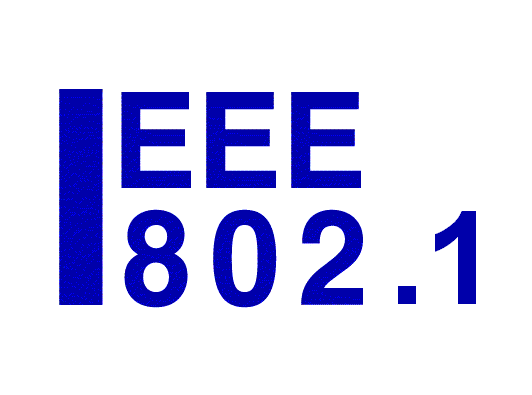IEEE 802 Nendica Procedures
Contents
ICAID-based Activity Description
Motivation and Goal
The mobile industry is currently pursuing the development of the next generation mobile communication networks fulfilling the requirements for extreme mobile broadband, massive machine-type communication, and ultra-reliable and low latency communications as specified in ITU-R M.2083 for IMT-2020. Many of the observed trends and use cases described in ITU-R M.2083 apply as well to communication infrastructures which do not belong to the IMT domain because they do not rely on high-velocity scenarios or on licensed radio spectrum.
IEEE 802 technologies are mainly deployed in communication infrastructures outside of the IMT domain, and may require enhancements to address the emerging requirements of networks for the next decade.
The goal of this activity is to assess, outside of the IMT activity, emerging requirements for IEEE 802 wireless and higher-layer communication infrastructures, identify commonalities, gaps, and trends not currently addressed by IEEE 802 standards and projects, and facilitate building industry consensus towards proposals to initiate new standards development efforts. Encouraged topics include enhancements of IEEE 802 communication networks and vertical networks as well as enhanced cooperative functionality among existing IEEE standards in support of network integration. Findings related to existing IEEE 802 standards and projects are forwarded to the responsible working groups for further considerations.
Related Work
There are no known IEEE 802 based activities comparable to this Industry Connections activity proposal. The proposed activity addresses topics distinct from the IEEE 802.3 ‘New Ethernet Applications’ Industry Connections activity. It will cooperate when findings may benefit both activities.
Potential Markets Served
IEEE 802 technologies are deployed in a huge number of market applications, which are exhibiting a growing diversity in terms of the features needed. Solutions spanning these different application spaces and feature requirements will be best addressed by leveraging common technology approaches. This activity will enable industry consensus building on the market/application requirements and identify gaps and trends not currently addressed by IEEE 802 standardization of new solutions, which will help to foster industry engagements in new study groups and standardization topics.
Stakeholder Communities
Stakeholders identified to date include but are not limited to: users and producers of systems and components for networking systems, high performance computing, cloud computing, telecommunications carriers, automotive, intelligent transport systems, eHealth, smart cities, IoT, and industrial applications.
Deliverables
There will be two deliverables:
1. Records of the meetings, including minutes and supporting presentations.
2. A report documenting the findings of the IC activity, with recommendations regarding new standardization topics, documentation of use cases and user needs for those topics, and proposed organizational approaches to ensure effective participation from user communities.
IEEE-Based and 802-based Procedures
ICAID-Based Procedures
- Operation is based on individuals.
- Nendica operates as a subgroup under the IEEE 802.1 Working Group.
- Any person attending a meeting may vote on all motions (including recommending approval of the deliverables).
- A vote is carried by 75% of those present and voting Approve or Disapprove.
- Policies and Procedures documents
IEEE 802 Nendica Report Development Process
- Nendica work is organized as a set of semi-autonomous Work Items leading to Nendica Reports.
- Nendica will ensure that all Work Items are within Nendica scope and that they make progress.
- Nendica will ensure ongoing exposure and wide review by issuing Call for Comments on all drafts and completed reports.
Work Item Initiation
Work could begin with a Study Item, for internal discussion, or be developed outside Nendica
Formal Work Item proposal
- Demonstrate industry interest
- Demonstrate fit with scope
- Identify Editor
With Nendica agreement, circulate for comment
- Circulated to 802 EC and 802.1 Working Group thirty days before IEEE 802 Plenary
- Circulated on Nendica web site
Approval:
- Nendica vote at face-to-face meeting
- Subject to confirmation at 802.1 WG Plenary
Work Item Progress
- Web site area
- Promotion of custom email reflector tag
- Notification to 802 EC reflector and Working Groups
- Authorization for standalone meetings, including telecons
Nendica Draft Report
- Work Item activity develops pre-draft report
- Motion to initiate Call for Comments on pre-draft report placed on Nendica agenda based on notice from Work Item Editor with at least 7 days notice prior to meeting
- Nendica votes (at telecon, or in-person) to identify draft as “Nendica Draft Report” and open Call for Comments
- Subject to confirmation at 802.1 WG Plenary
- “Nendica Draft Report” posted on Mentor
- Call for Comments issued, nominally 30 days
- Announced to 802 EC and Nendica list
Nendica Report
- Following comment resolution, and recirculation at the option of the Editor, candidate draft presented to Nendica for vote
- Subject to confirmation at 802.1 WG Plenary
- Approved document, marked a Nendica Report, posted on Mentor
- Announced, along with a process to collect comments
- Including proposals to enlarge or restrict scope, or divide work
- Work Item Editor tasked to report to Nendica on the comments received, and recommend revision.
- Following Nendica approval, Revision Work Item begins, following normal Work Item process
Sources
- IC17-001-01: IEEE 802 Nendica Industry Connections Activity Initiation Document (ICAID) [as rechartered 2910-03-21, following initial ICAID of 2017-03-23 to 2019-03-23]
- IEEE 802.1-18-0016-00-ICne (agreed 2018-03-06)
